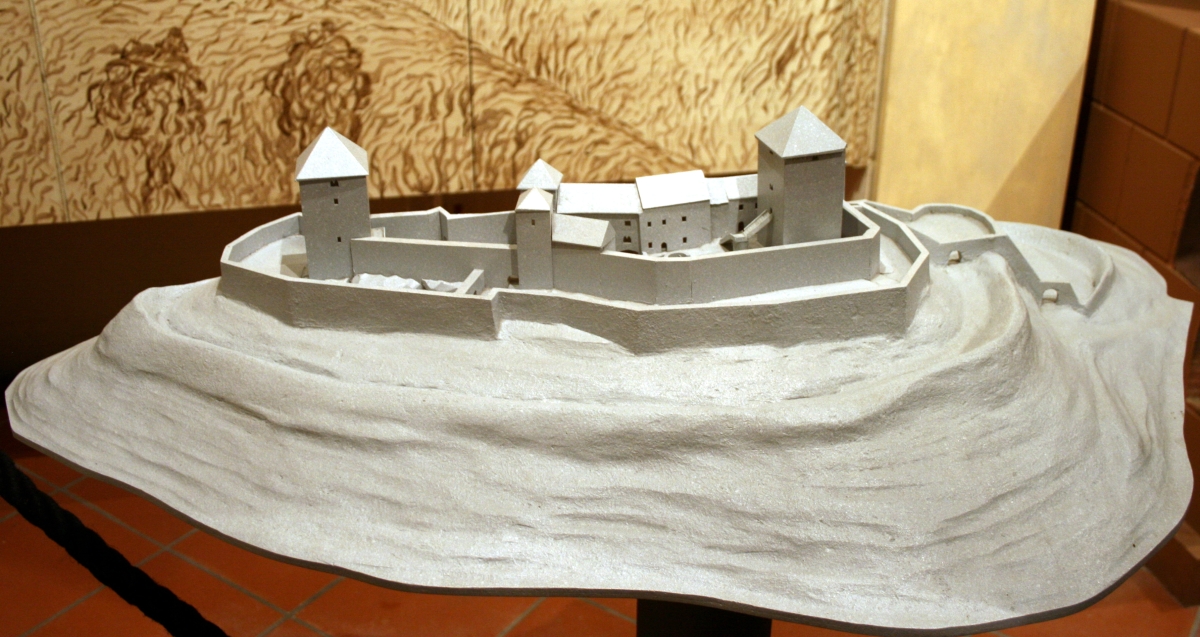Medvedgrad on:
[Wikipedia]
[Google]
[Amazon]
 Medvedgrad (; Croatian for ''bear-town''; hu, Medvevár) is a
Medvedgrad (; Croatian for ''bear-town''; hu, Medvevár) is a
Medvedgrad on WikiMapia
3D-model in Google Earth
{{Authority control Buildings and structures completed in 1254 Castles in Croatia Buildings and structures in Zagreb Ruined castles in Croatia Tourist attractions in Zagreb
 Medvedgrad (; Croatian for ''bear-town''; hu, Medvevár) is a
Medvedgrad (; Croatian for ''bear-town''; hu, Medvevár) is a medieval
In the history of Europe, the Middle Ages or medieval period lasted approximately from the late 5th to the late 15th centuries, similar to the post-classical period of global history. It began with the fall of the Western Roman Empire a ...
fortified town located on the south slopes of Medvednica mountain, approximately halfway from the Croatia
, image_flag = Flag of Croatia.svg
, image_coat = Coat of arms of Croatia.svg
, anthem = " Lijepa naša domovino"("Our Beautiful Homeland")
, image_map =
, map_caption =
, capi ...
n capital Zagreb
Zagreb ( , , , ) is the capital (political), capital and List of cities and towns in Croatia#List of cities and towns, largest city of Croatia. It is in the Northern Croatia, northwest of the country, along the Sava river, at the southern slop ...
to the mountain top Sljeme. For defensive purposes it was built on a hill, Mali Plazur, that is a spur
A spur is a metal tool designed to be worn in pairs on the heels of riding boots for the purpose of directing a horse or other animal to move forward or laterally while riding. It is usually used to refine the riding aids (commands) and to ba ...
of the main ridge of the mountain that overlooks the city. On a clear day the castle can be seen from far away, especially the high main tower. Below the main tower of the castle is ''Oltar Domovine'' (Altar of the homeland) which is dedicated to Croatian soldiers killed in the Croatian War of Independence
The Croatian War of Independence was fought from 1991 to 1995 between Croat forces loyal to the Government of Croatia—which had declared independence from the Socialist Federal Republic of Yugoslavia (SFRY)—and the Serb-controlled Yug ...
.
History
In 1242,Mongols
The Mongols ( mn, Монголчууд, , , ; ; russian: Монголы) are an East Asian ethnic group native to Mongolia, Inner Mongolia in China and the Buryatia Republic of the Russian Federation. The Mongols are the principal member ...
invaded Zagreb. The city was destroyed and burned to the ground. This prompted the building of Medvedgrad. Encouraged by Pope Innocent IV
Pope Innocent IV ( la, Innocentius IV; – 7 December 1254), born Sinibaldo Fieschi, was head of the Catholic Church and ruler of the Papal States from 25 June 1243 to his death in 1254.
Fieschi was born in Genoa and studied at the universitie ...
, Philip Türje, bishop of Zagreb, built the fortress between 1249 and 1254. It was later owned by bans of Slavonia
Ban, or BAN, may refer to:
Law
* Ban (law), a decree that prohibits something, sometimes a form of censorship, being denied from entering or using the place/item
** Imperial ban (''Reichsacht''), a form of outlawry in the medieval Holy Roman ...
. Notable Hungarian poet and Ban of Slavonia
Ban of Slavonia ( hr, Slavonski ban; hu, szlavón bán; la, Sclavoniæ banus) or the Ban of "Whole Slavonia" ( hr, ban cijele Slavonije; hu, egész Szlavónia bánja; la, totius Sclavoniæ banus) was the title of the governor of a territo ...
Janus Pannonius (1472), and Ban of Croatia
Ban of Croatia ( hr, Hrvatski ban) was the title of local rulers or office holders and after 1102, viceroys of Croatia. From the earliest periods of the Croatian state, some provinces were ruled by bans as a ruler's representative (viceroy) an ...
Ivan Karlović
Ivan Karlović (c. 1485 – 9 August 1531), also known as by his Latin name ''Johannes Torquatus'', was the Count of Krbava, and Ban of Croatia from 1521 to 1524 and again from 1527 to 1531. In defense against Ottoman Empire expansion, he lost mo ...
(1531), died in the Medvedgrad castle.
The last Medvedgrad owners and inhabitants was the Gregorijanec family, who gained possession of Medvedgrad in 1562. In 1574, the walls of Medvedgrad were reinforced, but after the 1590 Neulengbach earthquake, the fortress was heavily damaged and the owners relocated to Šestine. It was reduced to ruins, along with the Veliki Kalnik fortress in Križevci, by the 1699 Metlika earthquake. It remained in this state until the late 20th century, when it was partly restored and now offers a panoramic view of the city from an elevation of over .
Name
Medvedgrad in Croatian language is a combination of two words: "medved" (localkajkavian
Kajkavian (Kajkavian noun: ''kajkavščina''; Shtokavian adjective: ''kajkavski'' , noun: ''kajkavica'' or ''kajkavština'' ) is a South Slavic regiolect or language spoken primarily by Croats in much of Central Croatia, Gorski Kotar and no ...
dialect for "medvjed") - bear, and "grad" - town, making it translated as Bear Town.
The word medve means bear in Hungarian and considering the fact that this territory was part of The Kingdom of Hungary until 1920 ( The Treaty of Trianon) it probably translates to Bear castle References
Further reading
*External links
Medvedgrad on WikiMapia
3D-model in Google Earth
{{Authority control Buildings and structures completed in 1254 Castles in Croatia Buildings and structures in Zagreb Ruined castles in Croatia Tourist attractions in Zagreb